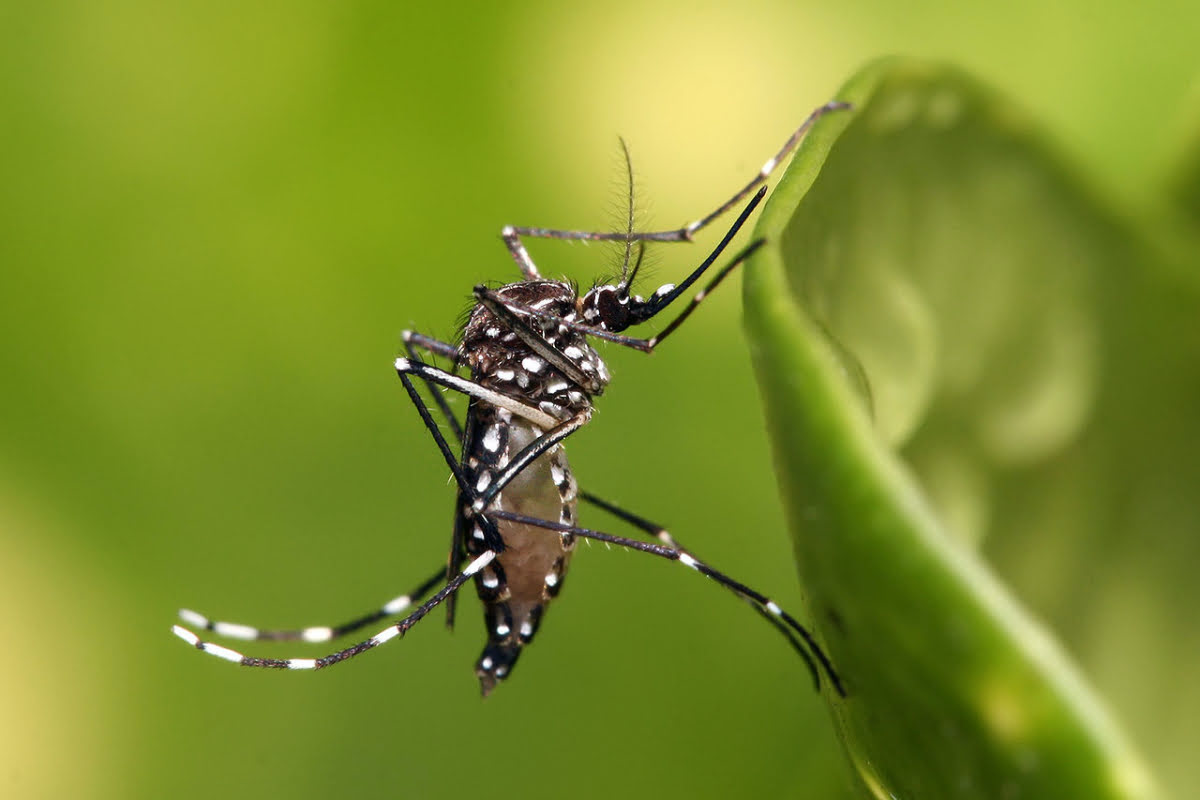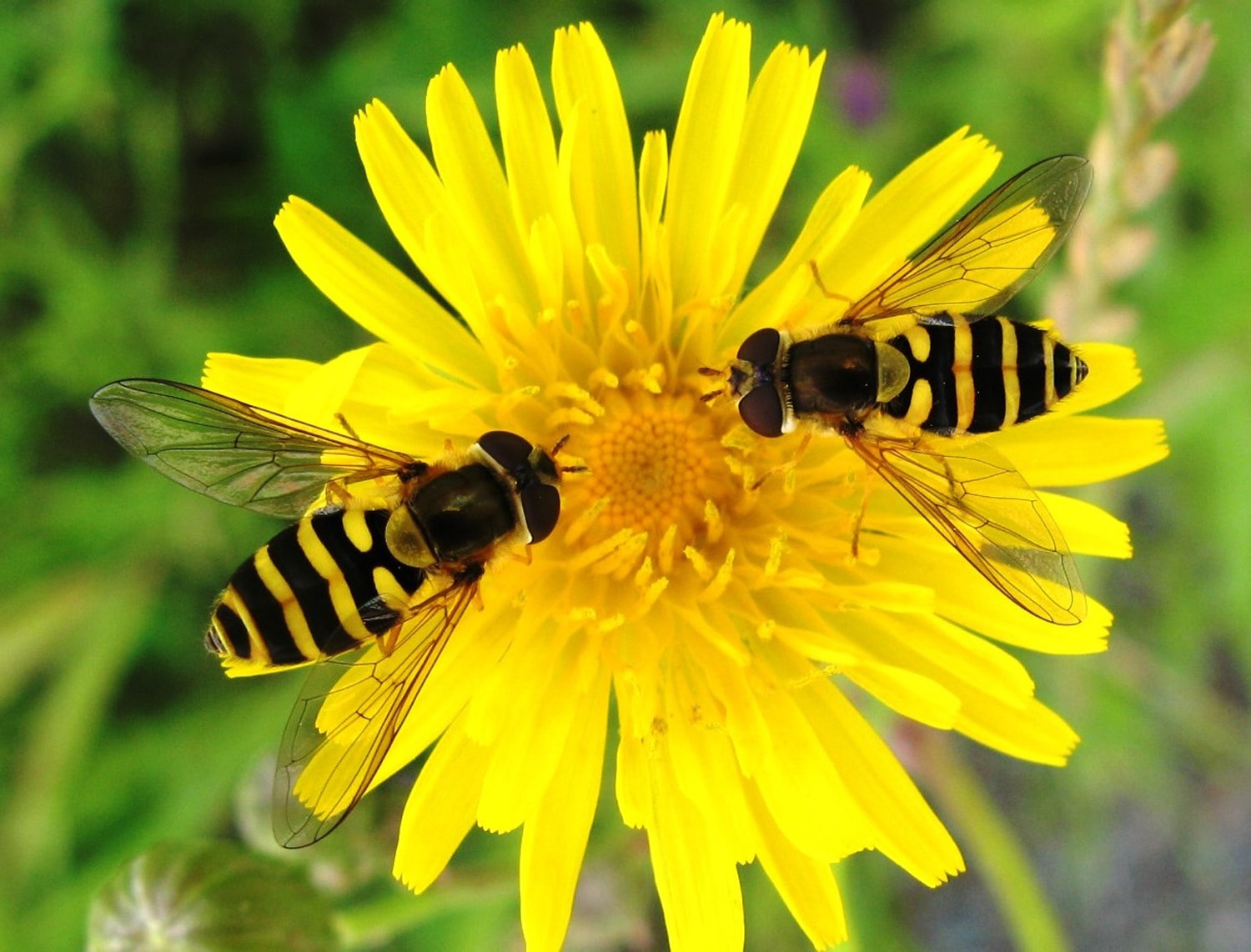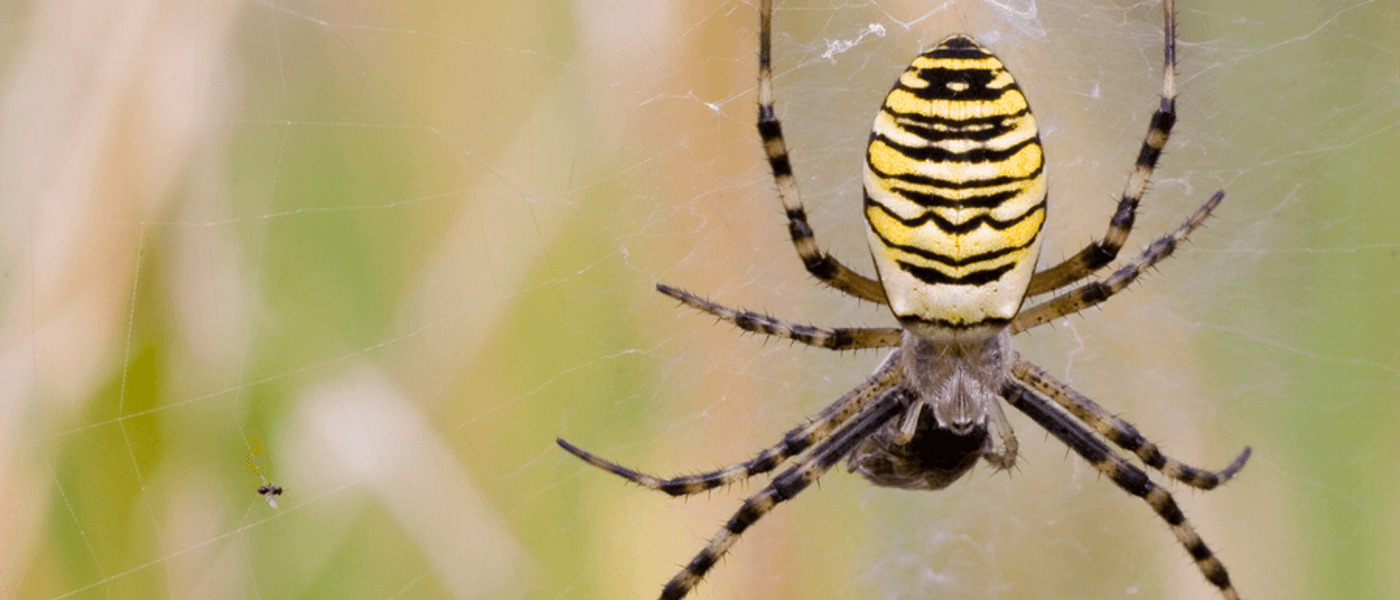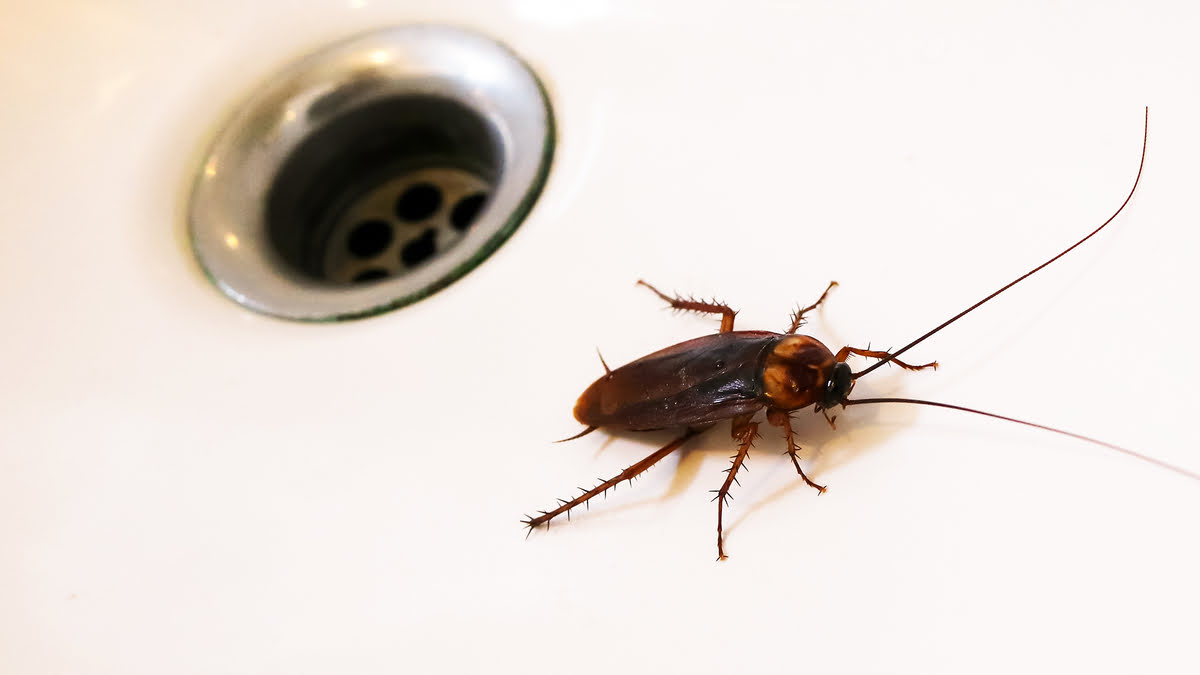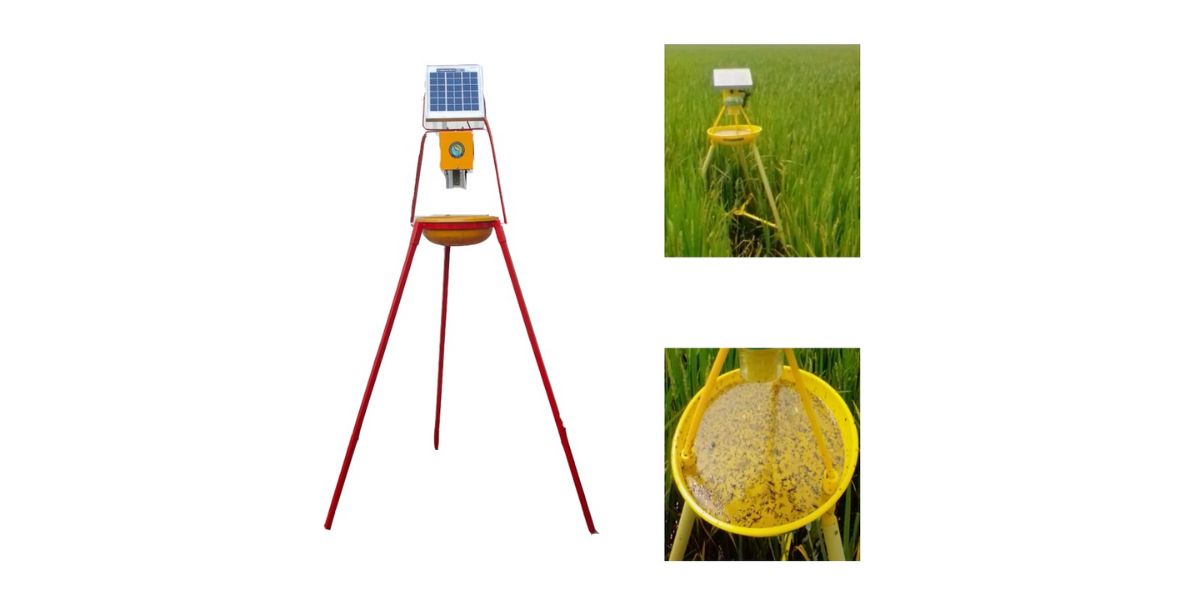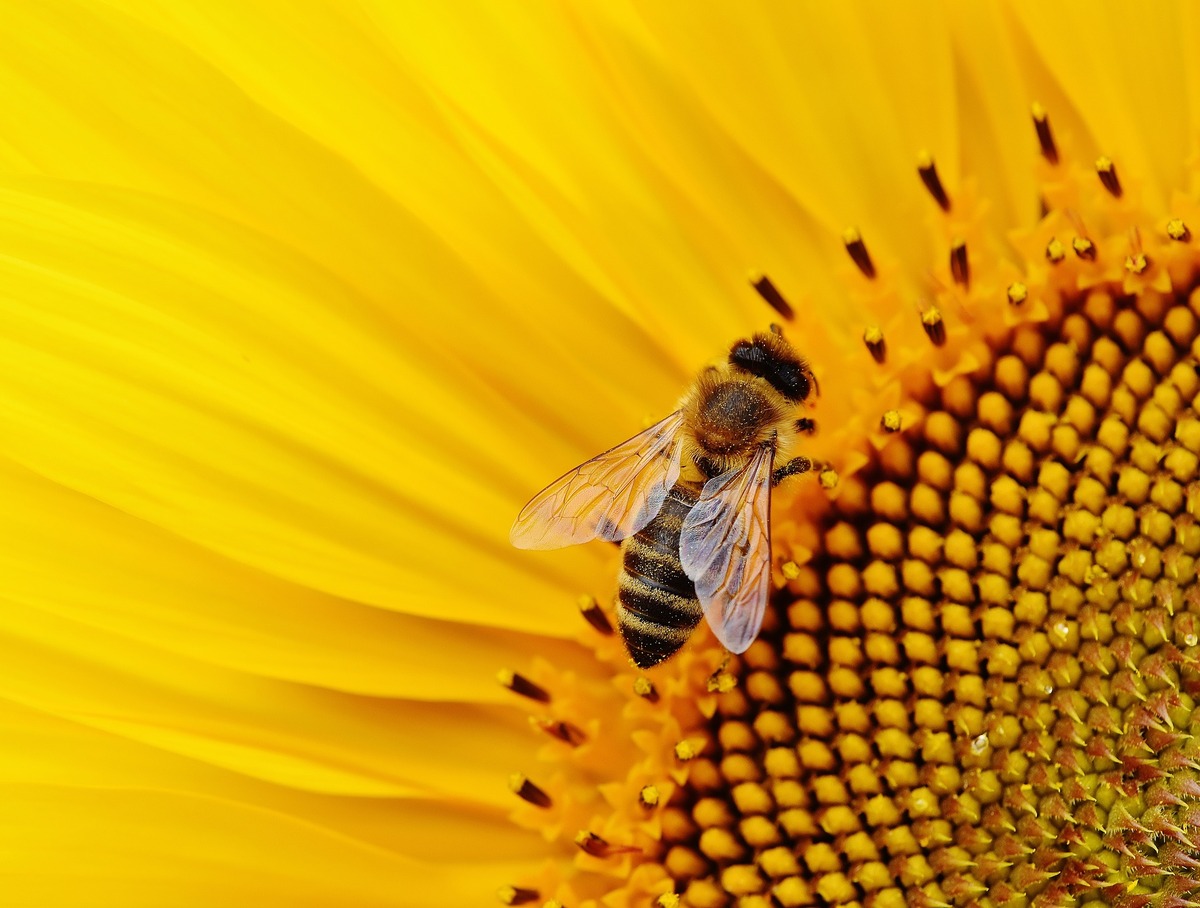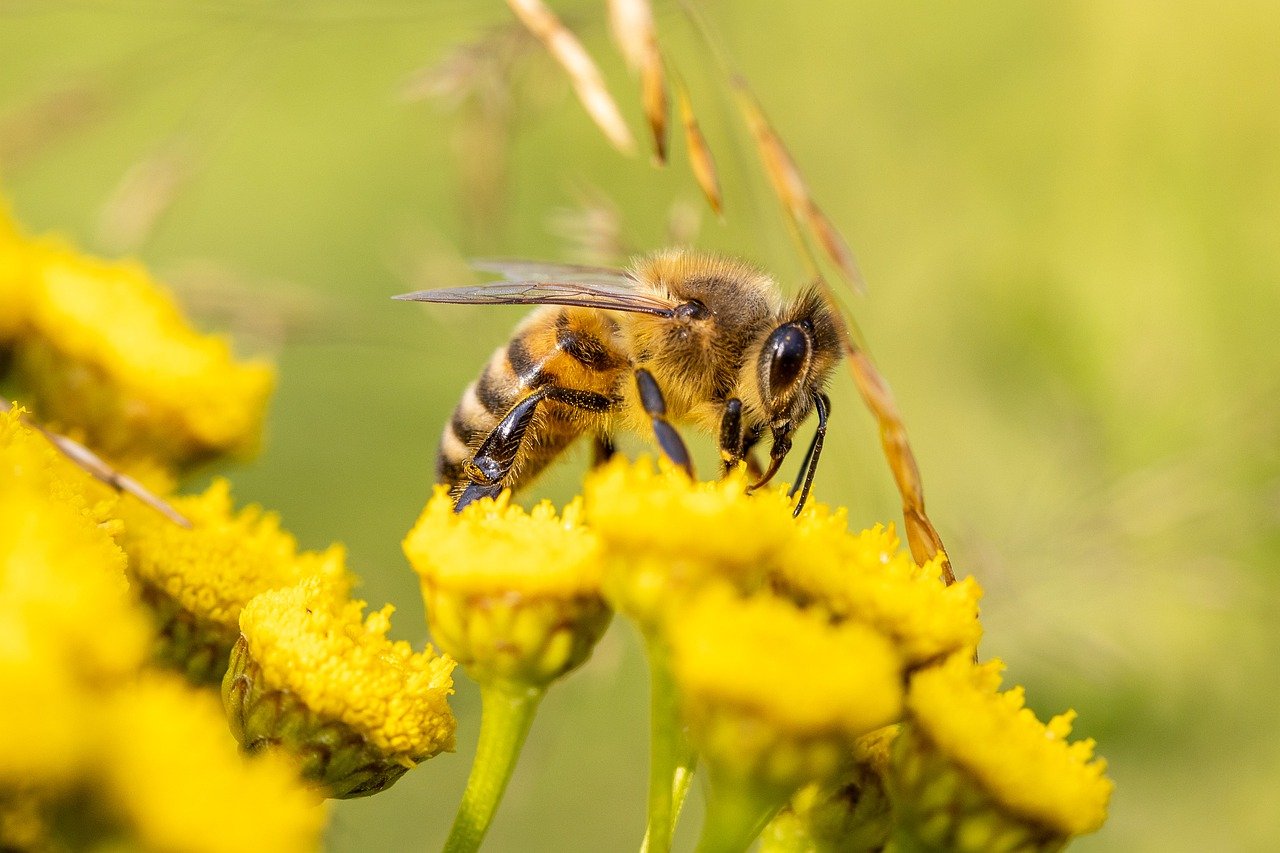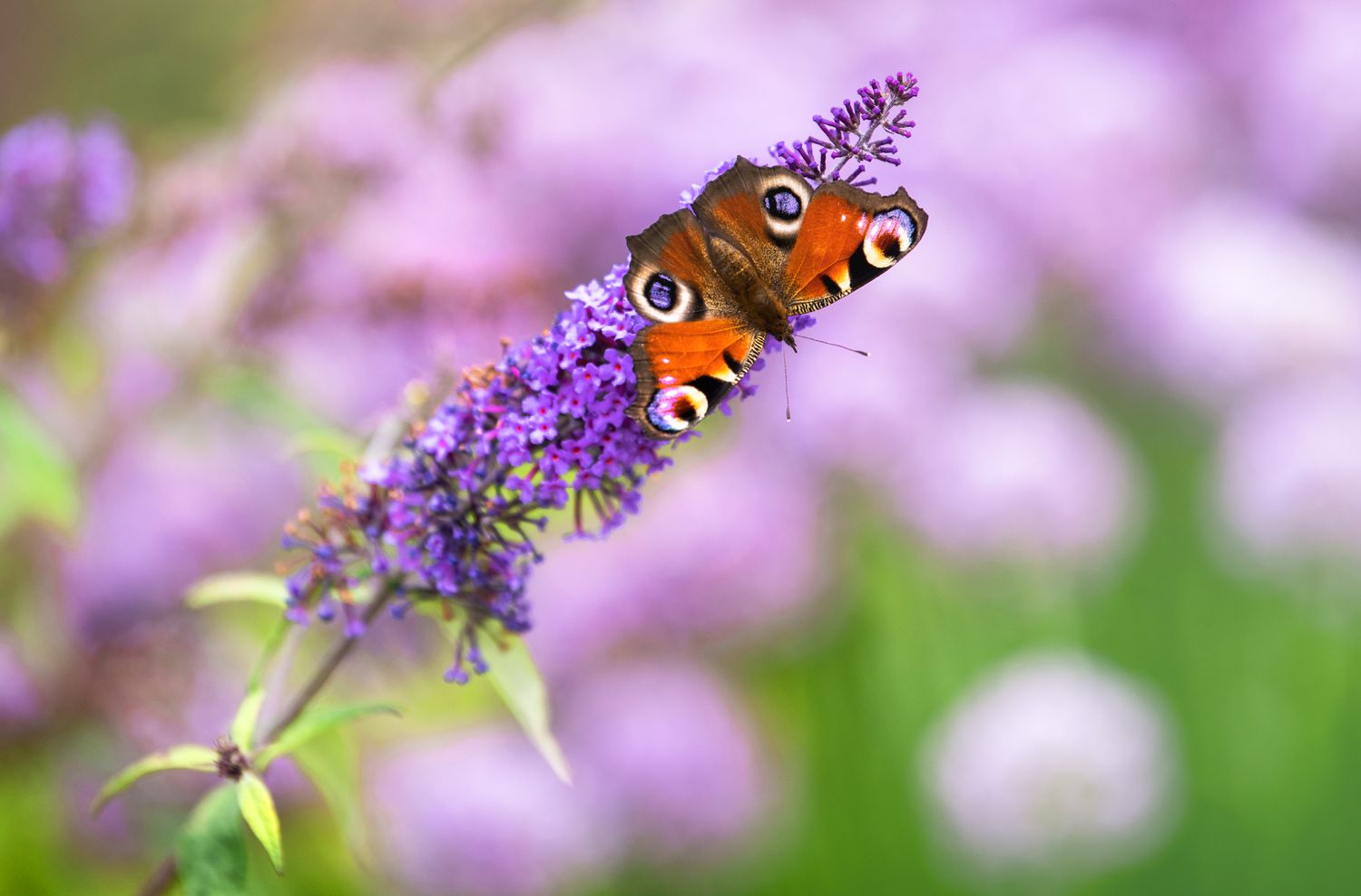Home>Gardening News and Trends>Latest News>Why Insects Are Attracted To Light
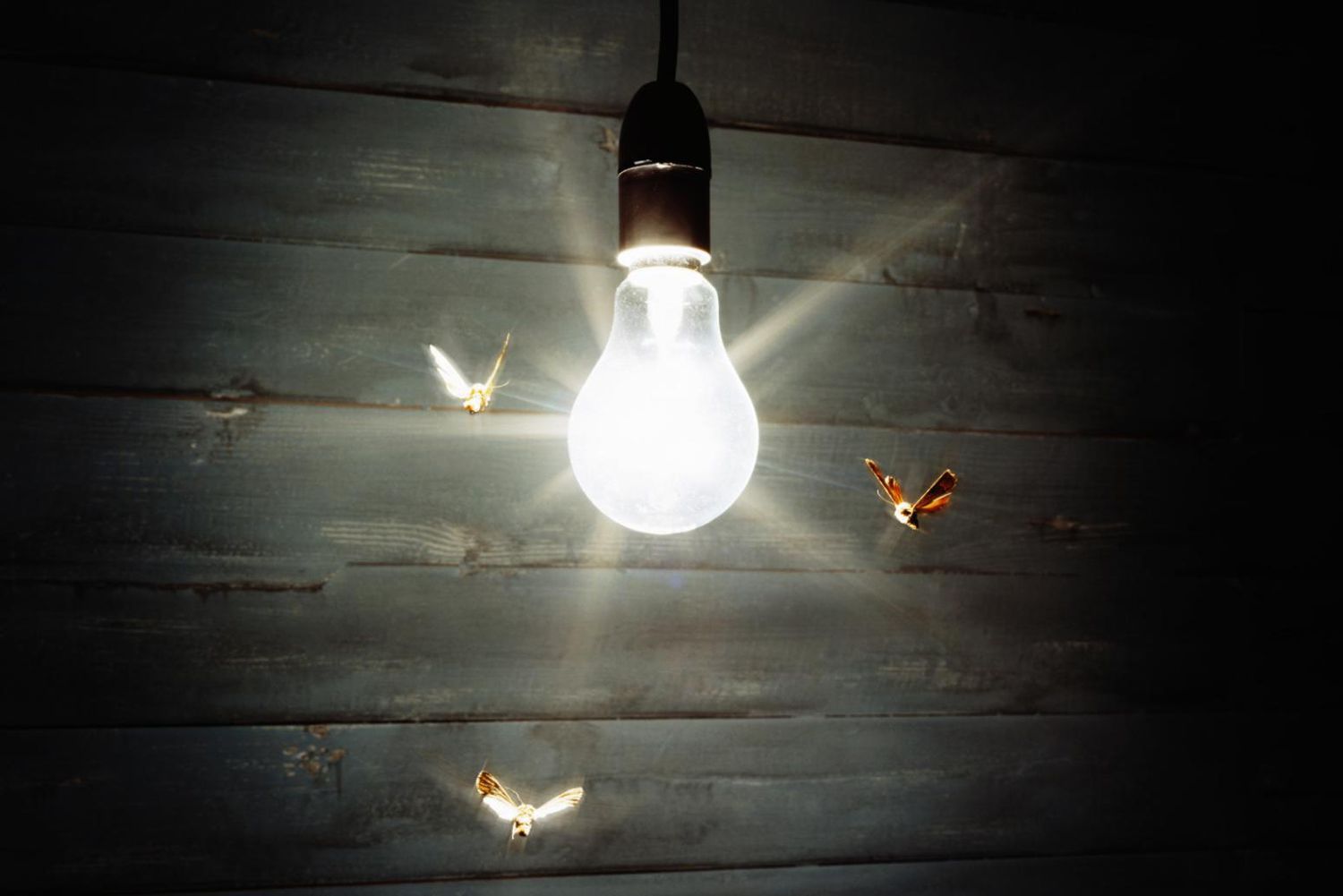

Latest News
Why Insects Are Attracted To Light
Modified: January 22, 2024
Discover the latest news on why insects are attracted to light and learn the fascinating science behind this phenomenon.
(Many of the links in this article redirect to a specific reviewed product. Your purchase of these products through affiliate links helps to generate commission for Chicagolandgardening.com, at no extra cost. Learn more)
Table of Contents
- Introduction
- The Science Behind Insect Attraction to Light
- Phototaxis: How Light Affects Insect Behavior
- The Role of Ultraviolet Light in Insect Attraction
- The Influence of Artificial Light on Insects’ Natural Behaviors
- Common Insects Attracted to Light Sources
- Why Insects Are Drawn to Light: The Theories
- The Impact of Insect Attraction to Light on Humans and Ecosystems
- How to Minimize Insect Attraction to Light: Strategies and Solutions
- Conclusion
Introduction
Have you ever wondered why insects are so attracted to light? It’s a phenomenon that has puzzled scientists and intrigued curious observers for centuries. Whether it’s the fluttering insects swirling around a porch light at night or the swarms of bugs encircling a street lamp, the attraction seems irresistible. But what is the reason behind this behavior?
The phenomenon of insects being drawn to light is known as phototaxis, and it can be observed in a wide range of insect species. From moths and mosquitoes to beetles and flies, these tiny creatures exhibit a strong inclination to move towards light sources. But why do they do it?
To understand this natural attraction, we must delve into the science behind it. Light plays a crucial role in an insect’s behavior, and different types of light can elicit different responses. From the influence of ultraviolet light to the impact of artificial light on their natural instincts, there are various factors at play.
It is important to note that not all insects are equally attracted to light. Some are more compelled to fly towards it, while others exhibit a neutral or even repellent response. The reasons behind this discrepancy are still being investigated by scientists.
In this article, we will explore the science behind insect attraction to light, the various theories that seek to explain this fascinating behavior, and its implications for both humans and ecosystems. Additionally, we will discuss strategies to minimize insect attraction to light, helping us coexist with these creatures in a more harmonious manner.
The Science Behind Insect Attraction to Light
Understanding why insects are attracted to light requires exploring the intricate mechanisms behind their behavior. One key factor is the phenomenon called phototaxis, which refers to the response of organisms to light stimuli.
The phototactic behavior of insects can be categorized into two types: positive phototaxis and negative phototaxis. In positive phototaxis, insects are drawn towards a light source, while in negative phototaxis, they move away from it. The specific response of an insect can vary depending on factors such as species, life stage, and ecological preferences.
But what exactly causes insects to exhibit this behavior? It has been observed that many insects, especially nocturnal ones, navigate using celestial cues such as the moon and stars. These natural light sources can guide their movements and assist in navigation. However, artificial light disrupts these natural cues, leading insects to veer off course.
Another aspect of the science behind insect attraction to light is the role of optical stimuli. Different types of light, such as ultraviolet (UV) and visible light, can have varying effects on insect behavior. UV light is particularly attractive to many flying insects, as they have photoreceptors that are highly sensitive to it. This sensitivity to UV light makes them more likely to be drawn to sources of light that emit it, such as certain lamps or bug zappers.
Additionally, insects are known to use light polarization as a navigational tool. This means they detect the angle at which light waves vibrate and use it to orient themselves. However, artificial light sources, especially those with fluorescent or LED bulbs, often emit unpolarized light, which can confuse and disorient insects.
Furthermore, insects are attracted to light sources due to their innate instincts. For example, moths are naturally drawn to light as they mistake it for the light emitted by celestial bodies like the moon. This behavior, known as positive phototaxis, can be traced back to their evolutionary adaptation to use moonlight for navigation or to find potential mates.
Interestingly, the intensity and spectrum of light also play a crucial role in insect attraction. Insects are more likely to be drawn to brighter lights, as they perceive them to be a potential food source or a suitable habitat. The specific spectrum of light emitted by a source can determine its attractiveness to different insect species as well.
The science behind insect attraction to light is multi-faceted and intricate, involving a combination of innate instincts, disrupted navigation, and specific light stimuli. Understanding these mechanisms can help shed light on this fascinating phenomenon and provide insights for developing practical solutions to minimize the negative impact of artificial light on insects and ecosystems.
Phototaxis: How Light Affects Insect Behavior
Phototaxis is a fundamental concept in understanding how light influences insect behavior. It refers to the way in which insects respond to light stimuli by either moving towards it (positive phototaxis) or away from it (negative phototaxis). This behavior is critical for insects that rely on light cues for navigation, searching for food, or finding mates.
Positive phototaxis is particularly evident in nocturnal insects, such as moths and beetles, which are naturally attracted to sources of light. This behavior has evolutionary roots in their use of celestial cues, such as the moon and stars, for navigation. When artificial light sources, such as streetlights or porch lights, come into play, these insects are often drawn off their natural course and towards the artificial light.
The effects of light on insect behavior can be further influenced by factors such as light intensity, wavelength, and polarization. Bright lights are more likely to attract insects, as they perceive them as potential sources of food or suitable habitats. The specific color or wavelength of light emitted can also determine its attractiveness to certain insect species.
Ultraviolet (UV) light plays a unique role in insect attraction. Many flying insects, including mosquitoes and certain fly species, are highly responsive to UV light. This is because they have specialized photoreceptors that are particularly sensitive to UV wavelengths. As a result, light sources that emit UV radiation, such as certain lamps or bug zappers, can be highly attractive to these insects.
In addition to UV light, insects also utilize light polarization for navigation. They have the ability to detect the angle at which light waves vibrate, which helps them orient themselves. However, artificial light sources often emit unpolarized light, which can disrupt the insects’ ability to use this navigational tool effectively.
It’s important to note that not all insects exhibit positive phototaxis. Some species, such as cockroaches and certain ants, display negative phototaxis and move away from sources of light. This behavior is believed to be a survival mechanism, as it helps them avoid predators or unwanted exposure.
Overall, phototaxis is a complex phenomenon that showcases how light stimuli can significantly impact insect behavior. By understanding how insects are naturally programmed to respond to light and the specific factors that influence their attraction or avoidance, we can better appreciate and find ways to mitigate the effects of artificial light on these creatures.
The Role of Ultraviolet Light in Insect Attraction
Ultraviolet (UV) light plays a significant role in the attraction of various insect species. Many flying insects, including mosquitoes, flies, and moths, are highly responsive to UV light. This unique sensitivity can be attributed to their specialized photoreceptors that are particularly tuned to detect UV wavelengths.
The attraction of insects to UV light can be seen in their behavior of swarming around certain light sources, such as certain lamps or bug zappers, which emit UV radiation. This phenomenon is especially prevalent during the nighttime when these insects are more active.
One explanation for the attraction of insects to UV light is that it mimics natural light cues that they have evolved to respond to. For example, many insects use celestial cues, such as the moon and stars, for navigation or finding mates. Moonlight, which contains a significant amount of UV light, serves as a source of guidance for nocturnal insects.
Additionally, UV light can also be an indicator of potential food sources for certain insects. Many flowers have patterns on their petals that reflect UV light, making them highly visible to insects. This adaptation allows the insects to easily locate nectar-rich flowers, which often emit UV-reflective cues to attract pollinators.
It is important to note that the influence of UV light on insect attraction can vary depending on the species. Some insects are more attracted to UV light than others, and the role of UV light in their behavior can be influenced by factors such as the time of day, environmental conditions, and specific ecological preferences.
However, the prevalence of artificial light, particularly those with high levels of UV radiation, can disrupt the natural behavior of insects. These light sources can disorient insects, leading them away from their natural habitats, affecting their feeding patterns, and potentially interfering with their reproductive cycles.
Understanding the role of UV light in insect attraction is crucial for finding ways to mitigate the impact of artificial light on these creatures. By designing lighting solutions that reduce UV emissions or utilizing light fixtures that are less attractive to insects, we can minimize the disruption to their natural behaviors and maintain a healthier balance in ecosystems.
The Influence of Artificial Light on Insects’ Natural Behaviors
Artificial light has a profound influence on the natural behaviors of insects. The widespread use of artificial lighting in urban areas, such as streetlights, outdoor security lights, and illuminated buildings, has significantly impacted the lives of these small creatures.
One major effect of artificial light is the disruption of insect navigation and orientation. Nocturnal insects, which rely on celestial cues like the moon and stars for navigation, can become disoriented by the presence of artificial light. As a result, they may veer off their natural paths and become trapped or exhausted around light sources.
Artificial light can also affect the feeding patterns of insects. Many flying insects, including moths and flies, are naturally attracted to light sources as they mistake them for sources of food or potential mates. This attraction can divert their attention from finding natural food sources, leading to starvation or reduced foraging efficiency.
Furthermore, artificial light can disrupt the natural reproductive cycles of insects. Some species rely on specific light cues for mating rituals, and the presence of artificial light can interfere with these behaviors. For example, female fireflies use distinctive light patterns to attract males, but bright artificial lights can disrupt their signals, leading to difficulties in finding and attracting mates.
Artificial light also has the potential to alter the timing of insect activities. Many insects, particularly those that are active during specific times of the day or night, have evolved to follow natural light-dark cycles. However, continuous exposure to artificial light can disrupt their internal biological clocks, leading to changes in their activity patterns, feeding habits, and reproduction.
This disruption in natural behaviors can have cascading effects on ecosystems. Insects serve as important pollinators, natural pest controllers, and a vital food source for other animals. Any disturbance in their behaviors can lead to imbalances in ecosystems, affecting the overall health and stability of the environment.
It is worth noting that not all artificial lights have the same impact on insects. The intensity, spectrum, and duration of light emission can influence their attractiveness to different insect species. By understanding these factors, we can develop lighting solutions that minimize the negative impact on insects’ natural behaviors while still meeting the needs of human activities.
Therefore, it is crucial to consider the influence of artificial light on insects and find ways to reduce its disruptive effects. By implementing responsible lighting practices, such as using low-intensity lights or motion-activated fixtures, we can help preserve the natural behaviors and ecological roles of insects in our shared environment.
Common Insects Attracted to Light Sources
When it comes to insects being attracted to light sources, there are several common species that exhibit this behavior. While the specific insects attracted can vary depending on geographical location and habitat, there are a few notable examples that are commonly observed swarming around lights.
One well-known insect that is frequently drawn to lights is the moth. Moths exhibit strong positive phototaxis and are known for their tendency to flutter around light sources, such as porch lights or street lamps. This behavior can be attributed to their natural navigation instincts, as they mistake artificial lights for celestial bodies like the moon.
Mosquitoes are another group of insects that are attracted to lights. They are not only drawn to sources of light but are also attracted to the heat emitted by these sources. The combination of light and warmth can be highly attractive to mosquitoes, making it more likely for them to congregate around light fixtures or illuminated areas.
Flies are also commonly seen around light sources. The behavior of flies being attracted to lights can vary depending on the species. Some flies are naturally drawn to light as they perceive it as a potential food source, while others may exhibit negative phototaxis and move away from intense light sources.
Beetles are another group of insects that are often observed attracted to lights. While not all beetles exhibit positive phototaxis, certain species are attracted to light sources. They may be drawn to lights due to their light-dependent behaviors, such as finding mates or seeking food sources.
Fireflies, or lightning bugs, are insects known for their bioluminescence. While they emit their own light, fireflies can also be attracted to artificial lights. The presence of bright lights can disrupt their ability to communicate using their distinctive light patterns, impacting their ability to find and attract mates.
It’s important to note that the specific insects attracted to light sources can vary depending on factors such as geographical location, time of year, and local ecology. Different regions may experience variations in the types and abundance of insects attracted to lights.
Understanding the common insects attracted to light sources can help in developing strategies to reduce the impact of artificial lighting on these species. By being conscious of the potential attraction of insects and choosing lighting options that minimize their disruption, we can strike a balance between human needs and the preservation of these vital insect populations.
Why Insects Are Drawn to Light: The Theories
The phenomenon of insects being drawn to light has captivated researchers and sparked various theories attempting to explain this behavior. While the exact reasons behind this attraction are still not fully understood, several theories have emerged to shed light on this intriguing phenomenon.
One theory suggests that the attraction of insects to light is rooted in their natural navigation instincts. Nocturnal insects, which are most commonly seen around lights, rely on celestial cues such as the moon and stars to navigate. Artificial lights, particularly bright ones, can disrupt these cues, leading insects astray and towards the light source.
Another theory proposes that insects are attracted to light sources because they mistake them for potential mates. Many insects, such as moths and fireflies, use bioluminescent displays as part of their mating behavior. The brightness and flickering of artificial lights may resemble the light emitted by potential mates, leading these insects to be drawn towards them.
Some scientists suggest that insects are attracted to light sources because they perceive them as a potential food source. Insects that feed on nectar, like moths and certain fly species, are naturally drawn to bright, colorful objects, including flowers. The brightness and warmth of light sources can mimic the visual cues associated with food, triggering their attraction.
Furthermore, it has been proposed that certain insects are attracted to specific wavelengths of light. Different insect species may have specific visual systems that are sensitive to particular wavelengths, such as ultraviolet (UV) light. Artificial light sources that emit UV radiation may be highly attractive to these insects due to their evolutionary adaptations.
There is also a theory that insects are attracted to light sources due to their innate positive phototactic behavior. Positive phototaxis refers to the natural inclination of insects to move towards light. While the exact evolutionary reasons for positive phototaxis are still not fully understood, it is believed that positive phototaxis helps insects maximize their chances of finding suitable habitats, food sources, or mates.
While these theories provide plausible explanations, it is important to note that the attraction of insects to light is likely influenced by a combination of factors. The specific reasons for insect attraction may vary across different species and can also be influenced by environmental conditions, such as ambient light levels and availability of preferred resources.
By studying these theories and gaining a deeper understanding of why insects are drawn to light, scientists can work towards developing strategies to minimize the impact of artificial lighting on these creatures. This knowledge can help in designing lighting solutions that are less attractive or disruptive to insects, allowing us to coexist in harmony with these essential components of our ecosystems.
The Impact of Insect Attraction to Light on Humans and Ecosystems
The attraction of insects to light has significant impacts on both humans and ecosystems. Understanding these impacts is essential for developing strategies to minimize the negative consequences and preserve the delicate balance of our natural environments.
One of the primary concerns related to insect attraction to light is the nuisance it can cause for humans. Swarms of insects around outdoor lights, such as porch lights or street lamps, can be frustrating and inconvenient. Additionally, insects attracted to light sources may enter homes or outdoor spaces, leading to potential annoyance or health risks.
Light-attracted insects can also pose risks to human health and safety. Mosquitoes, for example, are notorious for transmitting diseases such as malaria, dengue fever, and Zika virus. The presence of these disease-carrying insects around illuminated areas can increase the risk of exposure to vector-borne diseases.
Furthermore, the attraction of insects to artificial light can have ecological consequences. Insects play vital roles in ecosystems, including pollination, decomposition, and serving as a food source for other animals. Disrupting their natural behaviors through artificial lighting can lead to imbalances in ecosystems, affecting biodiversity and overall ecosystem health.
Artificial light can interfere with the reproductive cycles of certain insect species. The disruption of mating behaviors, such as the flashing patterns of fireflies, can impact their ability to find mates and reproduce. This can have cascading effects on populations and potentially lead to declines in insect numbers.
In addition to disrupting individual insect behaviors, the presence of artificial light can also alter entire ecological processes. For example, light pollution can interfere with the nocturnal activities of pollinators, reducing their effectiveness in pollinating plants. This, in turn, can impact plant reproduction and the availability of food sources for other animals.
Artificial light can also indirectly affect ecosystems by altering animal behaviors. Nocturnal predators that rely on insects as a food source may be affected by the disruption of their prey’s natural behaviors. This can result in shifts in predator-prey dynamics and potential declines in predator populations.
Recognizing the impacts of insect attraction to light on humans and ecosystems highlights the importance of responsible lighting practices. By using efficient and properly shielded lighting fixtures, we can minimize light pollution and reduce the disruption of insect behaviors. Additionally, implementing strategies such as turning off unnecessary lights or using motion sensors can help mitigate the negative effects of artificial light on insects and preserve the ecological balance.
How to Minimize Insect Attraction to Light: Strategies and Solutions
Minimizing insect attraction to light is crucial for maintaining a harmonious balance between human activities and the natural behaviors of these essential creatures. Here are some strategies and solutions that can help reduce the negative impacts of artificial lighting on insects:
1. Use lower-intensity lights: Bright lights tend to attract more insects. By opting for lower-intensity lighting options, such as warm amber or red lights, you can reduce the attraction of insects without compromising essential visibility or safety.
2. Utilize motion-activated lighting: Instead of keeping lights on continuously, consider using motion-activated or timed lighting systems. This helps minimize the amount of time lights are active and reduces the overall impact on insect behavior.
3. Install properly shielded fixtures: Ensure that outdoor lighting fixtures are properly shielded to direct light downward and limit the spread of light upwards and horizontally. This will help contain the illumination to the desired area and minimize the exposure of insects to artificial light sources.
4. Position lights strategically: Place outdoor lights away from windows and entrances to minimize the chance of attracting insects towards living spaces. Positioning lights away from natural habitats, such as gardens or natural reserves, can also reduce the impact on insect populations.
5. Use insect-friendly lighting: Consider using LED lights with warm color temperatures, as they emit less blue light, which is known to attract more insects. Additionally, selecting lighting fixtures that have been specifically designed to be less attractive to insects can also help mitigate their attraction.
6. Implement local regulations and policies: Encourage the adoption of local regulations or guidelines that promote responsible outdoor lighting practices. By raising awareness and implementing restrictions or recommendations on lighting usage, communities can collectively reduce the negative impact on insect populations.
7. Promote education and awareness: Educate individuals about the importance of minimizing the impact of artificial light on insects. By raising awareness about the ecological implications and providing information on responsible lighting practices, we can empower individuals to make informed choices and contribute to preserving insect populations.
Implementing these strategies and solutions can help minimize the disruption of insect behaviors caused by artificial lighting. By reducing the attraction of insects to lights, we can protect their natural habitats and vital ecological roles, ensuring a healthier and more balanced environment for both insects and humans.
Conclusion
The fascination and curiosity surrounding the attraction of insects to light have motivated scientists to delve deeper into the mechanisms and impacts of this behavior. While the exact reasons behind this phenomenon are still not fully understood, the science behind it provides valuable insights into the complex interplay between insects and light.
From phototaxis and the role of ultraviolet light to the influence of artificial lighting on insects’ natural behaviors, we have explored the various factors that contribute to insect attraction to light. The theories proposed to explain this behavior highlight the multifaceted nature of insect responses to light stimuli.
Understanding the impacts of insect attraction to light on both humans and ecosystems is crucial for finding a balance between human needs and the preservation of these essential creatures. The nuisance and health risks associated with light-attracted insects can be mitigated through responsible lighting practices that minimize disruption.
Minimizing the negative impacts of artificial lighting on insects requires a combination of strategies and solutions. Using lower-intensity lights, properly shielded fixtures, motion-activated lighting, and insect-friendly lighting options can help reduce attraction. Local regulations, education, and awareness also play a vital role in promoting responsible lighting practices and preserving insect populations.
By taking these steps, we can minimize the disturbance to insect behaviors, protect their habitats, and maintain ecological balance. Preserving the natural roles of insects as pollinators, pest controllers, and essential components of ecosystems is crucial for the health and sustainability of our planet.
Continued research and a collective effort to implement environmentally-conscious lighting practices can pave the way for coexistence between humans and insects, fostering a harmonious relationship that benefits both species and the natural world as a whole.
